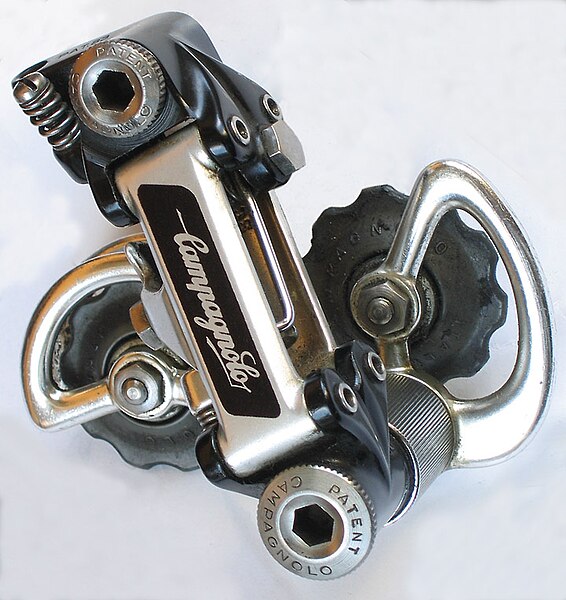Here's something the author of Disraeligears (no, not the Creem album) would love, or at least appreciate. So would another one of my favorite bike bloggers, The Retrogrouch. For that matter, I would, too.
Back in the mists of time, before the cycling world was ruled by Campagnolo, Shimano and SRAM, a bicycle component manufacturer was beginning its ascent in the Land of the Rising Sun. They would enjoy dominion in the world of quality bicycles--save, of course, for Campagnolo's racing colony--long before most had heard of Shimano or SRAM was even a seed in the great plains of cycling.
(Can you hear Sprach Zarathustra in the background?)
That company's demise came in much the same way as the deaths of other empires: through complacency, hubris and responding to a threat that really wasn't. That is the reason why its beginnings are, if not lost in the mists of time, at least not remembered by many.
That company was called--ironically, in retrospect--SunTour. In 1964, its chief designer created a derailleur with a design--called the slant parallelogram--that would change derailleurs for ever. For about a decade prior, however, it would offer derailleurs that seemed to be derivatives, if not copies, of Huret mechanisms of that time.
The SunTour 8.8.8 wide in the photo does, in fact, bear both mechanical and visual semblances to the Huret Competition from the same period. The derailleur Louison Bobet, the first cyclist to win the Tour de France in three consecutive years, rode is a refinement (some say just a re-badging) of that derailleur. SunTour's version, on the other hand, has a longer cage and might be considered a "touring" version.
Both derailleurs are on eBay. For $158, plus $12 shipping, you can have the SunTour sent to you from Japan. The Huret "Tour de France", on the other hand, will set you back $999.52. But at least shipping is included and, hey, not only is it associated with one of the greatest cyclists of all, but the seller claims to have received it as a gift from Tom Avenia, one of the folks who kept the torch burning during the "dark ages" of cycling in the US.
I'm a Francophile, and I still have a soft spot for SunTour, in spite of the blunders that led to their undoing.
Back in the mists of time, before the cycling world was ruled by Campagnolo, Shimano and SRAM, a bicycle component manufacturer was beginning its ascent in the Land of the Rising Sun. They would enjoy dominion in the world of quality bicycles--save, of course, for Campagnolo's racing colony--long before most had heard of Shimano or SRAM was even a seed in the great plains of cycling.
(Can you hear Sprach Zarathustra in the background?)
That company's demise came in much the same way as the deaths of other empires: through complacency, hubris and responding to a threat that really wasn't. That is the reason why its beginnings are, if not lost in the mists of time, at least not remembered by many.
That company was called--ironically, in retrospect--SunTour. In 1964, its chief designer created a derailleur with a design--called the slant parallelogram--that would change derailleurs for ever. For about a decade prior, however, it would offer derailleurs that seemed to be derivatives, if not copies, of Huret mechanisms of that time.
The SunTour 8.8.8 wide in the photo does, in fact, bear both mechanical and visual semblances to the Huret Competition from the same period. The derailleur Louison Bobet, the first cyclist to win the Tour de France in three consecutive years, rode is a refinement (some say just a re-badging) of that derailleur. SunTour's version, on the other hand, has a longer cage and might be considered a "touring" version.
Both derailleurs are on eBay. For $158, plus $12 shipping, you can have the SunTour sent to you from Japan. The Huret "Tour de France", on the other hand, will set you back $999.52. But at least shipping is included and, hey, not only is it associated with one of the greatest cyclists of all, but the seller claims to have received it as a gift from Tom Avenia, one of the folks who kept the torch burning during the "dark ages" of cycling in the US.
I'm a Francophile, and I still have a soft spot for SunTour, in spite of the blunders that led to their undoing.
















